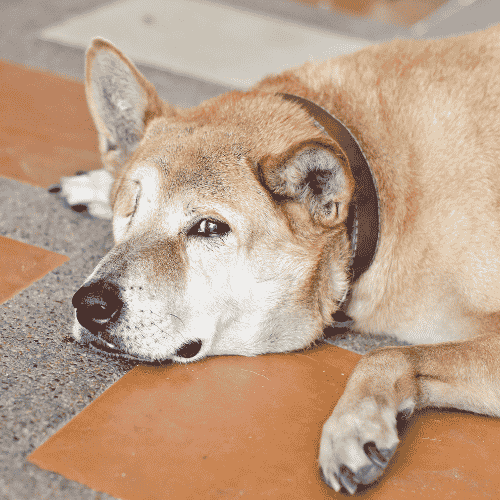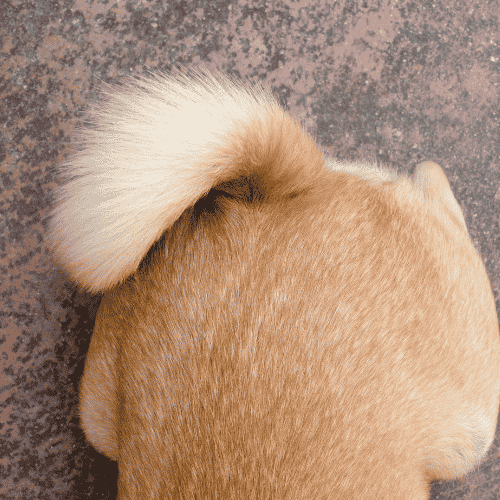Every dog uses its tail. They make use of them to communicate their feelings in almost everything. When dogs are moving quickly on land, they use their tails to maintain their balance, and when they are swimming, they use them as a rudder.
When you pet your dog and yelp for no reason, it can be annoying and frustrating. Pain isn’t always easy to discern, but it’s usually a good sign that something’s not quite right. If you wonder, “why does my dog yelp when you lift his tail? You should find the cause by observing their gestures and tail movements.

A few different situations could explain why your pup yells when you lift his tail. It’s possible that the dog is in discomfort or stressed. While this is going on, it’s also possible that your canine companion is in a state of overexcitement or is trying to get your affection/attention.
Whatsoever the cause, you might not observe it right away, especially if you have touched your dog. Therefore, the first thing which needs to be done is to understand the possible causes.
Why Does My Dog Not Lift His Tail?
If your furry friend is happy, you’ve trained him with positive reinforcement, and he’s not sick; his low tail or between his legs is painful. There are several potential causes for this discomfort to show itself. If your good buddy is of a small breed, such as a Pug or a Yorkshire, he may be suffering from constipation, a common condition found in dogs of that size.
If you live with one of them, you must pay close attention to their depositions. The ideal feces are dark brown, readily collected, and do not leave any fragments behind. If it gets too thick and black, he needs to drink more water. If you observe this happening, tell him to drink more. Occasionally, you will detect blood in his feces due to the force required to release it.
Why My Dog Yelps When the Tail Is Lifted?
A dog with a sprained muscle in the tail will yelp when the tail is lifted because the tail is unpleasant to touch. Even if a dog with a limber tail does not have a sickness, the condition promotes inflammation, and the animal feels discomfort. Any dog, regardless of breed, can have a limber tail and will yelp in response when the tail is raised.
Dogs can suffer fractures in their tails if they fall from a great height or if their tails are hit in a vehicle. This injury can cause nerve damage and make the affected area sensitive to touch. In more difficult situations, tail removal may be necessary. The dog will let out a yelp when you lift on this tail.

It is natural for a dog to push back from being petted at the tail, particularly if the tail has any abrasion on it, such as scratches. Because of this damage, the dog’s naturally red skin may become exposed, and blood loss may also occur.
Dogs with flea allergies or an affected anal gland may bite their tails, causing wounds. Your dog will cry when you lift its tail if it has this wound.
Neem Oil Dog Toothpaste – Is It Safe For Dogs?
What Is Limp Tail?
The term “limp tail” refers to an injury that occurs to a dog’s tail due to intense physical activity. This particular medical disease is referred to by its technical name, acute caudal myopathy. It happens after hard exercise, which causes momentary injury to the muscles, ligaments, and tendons near the base of the tail. Occasionally, a mild vertebral injury may occur because a limp tail is an uncomfortable condition. A dog that has it would be unable to wag or elevate its tail if it has it.
Causes of Limp Tail
A limp tail can be caused by any vigorous activity that requires a dog to utilize its tail. The following are some examples of common reasons:
- Swimming in cold water
- Active hunting
- Strenuous exercise
- Hard play sessions
- Dog sports and activities
Because of the nature of these physical exercises, the tail may be used excessively. An injury can occur when the tail is utilized for balance, wags in excitement or blood vessels constrict in cold water.
What to Do When Your Dog’s Tail Gets Injured
After sufficient relaxation, most dog tail problems will disappear. You may treat an injured muscle in your dog’s tail by administering pain medication and antibiotics to your pet.
If you need to inspect an injury or check the region around the tail, lifting your dog’s tail may be unavoidable. Dog trainers can instruct you on how to control your dog in challenging situations such as this one. In addition to this, you need to teach your dog to be comfortable with being petted and touched around the tail area.
When treating your dog’s tail injuries, be careful that some may get aggressive if the tail is raised. When working on your dog’s tail, it is best not to have any young children nearby.
You may also see a veterinarian if you believe that raising your dog’s tail may cause you pain or injury.
How to Deal With Canine’s Yelping
The most essential task is to gather all available information. It would be helpful if you could find out:
- The cause of the pain
- Since when does your dog yell when touched?
All of these signs can assist you, and your veterinarian chooses the best course of therapy. Remember that you shouldn’t offer pain medication immediately quickly, particularly if you aren’t sure what’s going on with the dog.
Pain-Inducing Yelp
When your dog is playing or exercising, you should make sure that they have free access to a sufficient amount of clean drinking water so that they do not have any pain in their joints or muscles. If you cannot visit a veterinarian for an accurate diagnosis, you should restrict your dog’s activity and keep clear of activities that require a lot of physical effort.
Your dog may need physical/neurological examinations in addition to general consultation. After that, a vet will finally be able to diagnose the issue and choose the most effective treatment.
Anxious Yelp
If your pooch is anxious or stressed and yelps due to this, it may be difficult to get him to stop doing this until you remove the cause of his fear. Dogs may even be unable to control their agitation, excessive licking, gnawing, or breaking of items.
Some dogs might develop separation anxiety if you’re always with them. Even though you might want to spend all of your time with your pooch, this can be a big problem if you have to be away for a long time.

Doctor of Veterinary Medicine (D.V.M.) at Nation Taiwan University,Master of Science (M.S.) in Biomedical Engineering at National Taiwan University of Science and Technology




